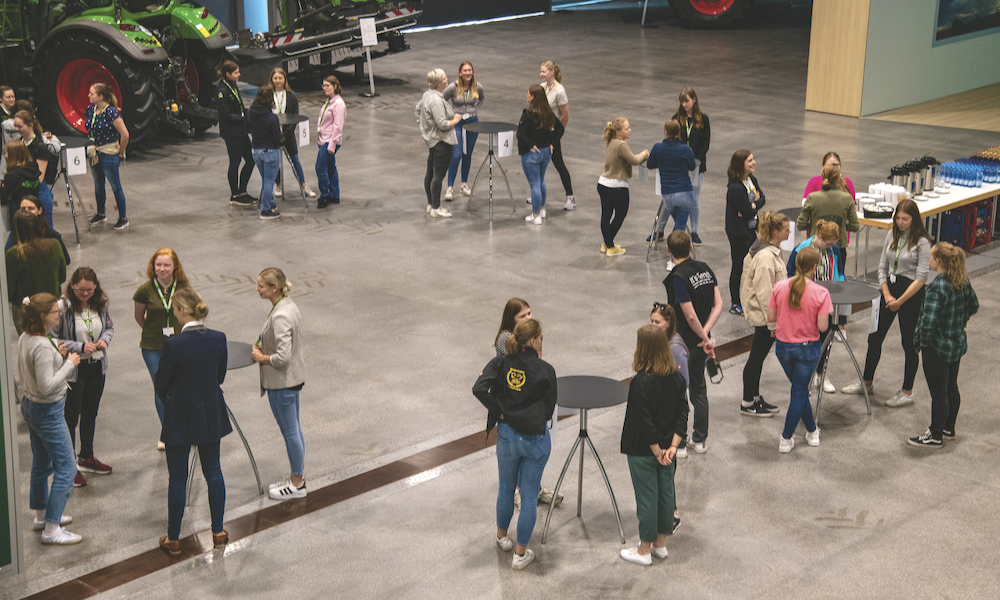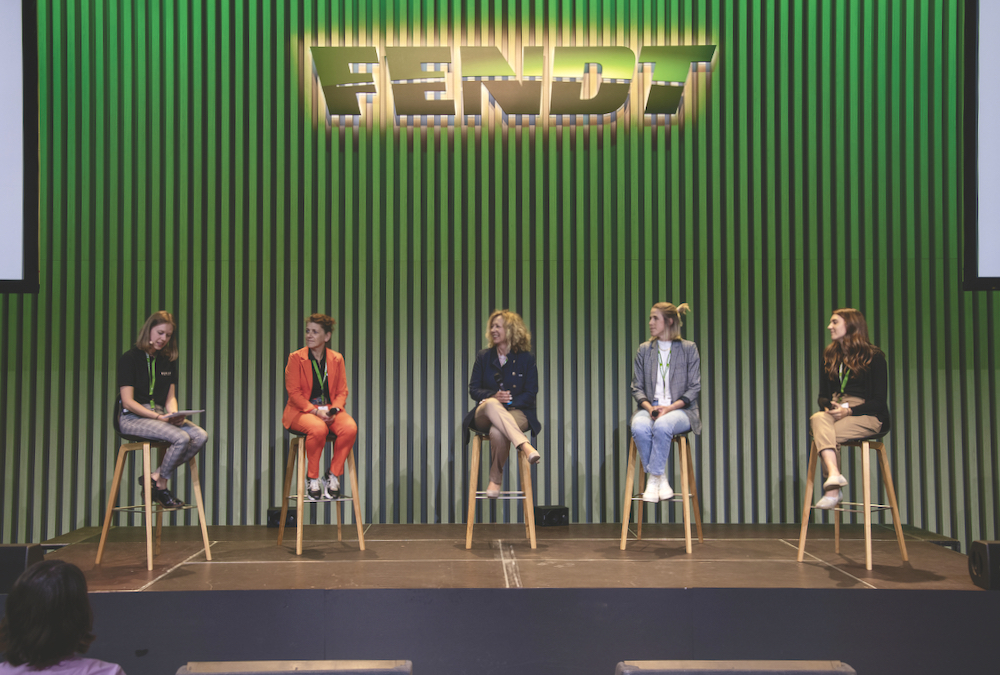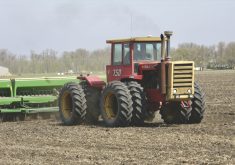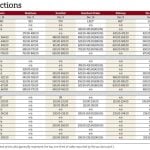Canada’s population is becoming increasingly diverse. Statistics Canada estimates that immigrants made up roughly 22 per cent of the population in 2016, and our country expects to welcome over 400,000 more per year until 2024.
This will almost certainly result in a continually growing percentage of visible minorities among Canada’s working age people over the next decade, similar to the trendlines in other western nations.
If you walk the grounds at a farm show, though, that diversity isn’t really very obvious. Nor is it something I’ve seen when meeting with marketing staff at any of the farm equipment brands — whether major or minor — on any continent.
Read Also

Winter downtime: Organize your farm records now for smoother operation
How to organize farm finances paperwork
But while visible minorities may not yet account for many of those brand staffers, I have noticed one significant demographic change over the years. Women are increasingly making up part of their executive teams.
That hasn’t occurred by accident. All the major brands are deliberately moving to increase diversity across their workforces, and getting women into leadership roles is one key target all have focused on. An excerpt from CNH Industrial’s report A Sustainable Year makes that pretty clear.
- [READ MORE] A question for women in 2022
- [READ MORE] The equitable farm
“To establish a diverse, inclusive and attractive workplace well into the future,” it reads, “the company is carrying out initiatives that ensure women and minorities are represented in our talent pipeline, as well as increasing the number of women in leadership positions across the organization … The company is also creating region-specific initiatives that advance our (diversity and inclusion) efforts.”

Among those region-specific initiatives, the company’s Brazil operation has launched an effort to help lift women out of poverty by providing them with specific skills training that would allow them to fill positions at the assembly plant near Sao Paulo. The courses are held in the evenings to allow stay-at-home mothers to attend. The company also provides assistance such as transportation, meals and workwear for them. The aim is to help establish a skilled workforce that could raise the participation rate for women at the facility well above its current 15 per cent.
When it comes to broader goals, CNH has set itself a target of having at least 20 per cent of its leadership roles occupied by women as early as 2024.
Despite being well qualified for many corporate positions, especially highly technical ones such as engineers, AGCO’s Fendt brand has recognized that many women feel insecure in occupying positions in the traditionally male-dominated STEM (science, technology, engineering and mathematics). To help prepare young women to deal with that insecurity, commonly called “imposter syndrome,” the company addressed it at a Female Career Day held at the Fendt facility in Germany in June. Ivory Harris, senior vice-president and chief human resources officer at AGCO, gave a speech on the topic.
“Unfortunately, women are particularly likely to experience feelings of not deserving their success,” Harris said. “Self-doubt makes it difficult to recognize and appreciate their own accomplishments. The phenomenon of women feeling imposter syndrome more often than men can be exacerbated by women in first-time roles held by women, in what has been a traditionally male-dominated work environment, such as the STEM field. I’m passionate about empowering women at AGCO and encouraging talented female students, especially from the fields of math, computer science, science and technology.”
“The agricultural industry is changing,” adds Ingrid Bussjaeger-Martin, managing director for finance and IT at Fendt. “That makes the work very exciting. Producing food sustainably and innovatively for a growing world population presents us as agricultural machinery manufacturers with new challenges that we can only master together. I am delighted that so many young women are taking part in our Fendt Female Career Day today for the third time and are interested in a career in agricultural technology.”
That third seminar accommodated 50 young women looking to make a career in an agriculture-related field.

Over at John Deere, one woman is leading a unique effort to increase diversity in its workforce and she is doing it in a non-traditional location: urban Chicago. Brand ambassador for the company, Johanna Acevedo, spends much of her time in the former meat-packing district turned urban hub of Chicago, where farming isn’t likely top of mind for residents. She’s introducing skilled potential hires to an ag equipment industry they had no idea needed tech-savvy talent. In fact, Acevedo didn’t know that much about the company herself until she started working for Deere.
“When you live in a bigger city and there are no farms around you, John Deere is not one of the first companies that comes to mind,” she says. “And while I knew of John Deere, I definitely didn’t know John Deere was an opportunity for me to come and be in IT (information technology).”
As group engineering manager in Chicago where Deere is in the process of expanding its IT and technology footprint, first to 150 and ultimately to 300 people, Acevedo is the onsite leader responsible for “culture, hiring strategy and community outreach.” The brand’s office there is located in the same neighbourhood as Google and Facebook, which says a lot about the advanced state of modern ag equipment manufacturing today.
“A lot of people know John Deere for being a hard-iron manufacturing company,” Acevedo says. “So, I have this amazing opportunity to tell them that we also have an autonomous tractor, that we’ve had self-driving vehicles for 20 years, that we have one of the most accurate GPS systems on the market, and that we have the See and Spray Ultimate technology which uses really cool AI (artificial intelligence).”
Acevedo’s goal is to spread the message that the brand is determined to establish a culturally diverse workforce. And she’s working to make that happen sooner rather than later.
“Perhaps as a result of its presence in rural areas (which sometimes lack racial diversity), people of colour don’t always realize that John Deere is really interested in having diverse and inclusive teams,” Acevedo says. “I think (Deere’s new locations in) Chicago and Austin in particular are really great opportunities for us to show people of colour that we’re in this arena not just to play in the tech space, but because we want your diverse talent at our company. We want you to think of John Deere as an employer of choice.”
If finding and hiring a diverse group of employees is a challenge, however, so is retaining them after they’re on payroll.
“As a company and organization, we did a good job of bringing in diverse talent, but we weren’t always connecting and creating the environment and the culture where people felt comfortable staying,” says Leslee Hager, vice-president of internal audit at Deere.
But one of the company’s other departments has distinguished itself in leading the way in that effort. Deere’s accounting and finance arm had earned a reputation for being inclusive and diverse, and during a late 2020 roundtable discussion, Hager recalled a tipping point that motivated the team to raise the bar even higher.
“We were told, ‘No, this is not enough,’” she said. “One of the leaders said, ‘We need to take big action and we need to make sure all our leaders are engaged.’”
“Work streams” were created that focused on career development, diversity in leadership, recruiting and early career, culture and engagement, inclusivity conversations, and — linking them all — communication. Each work stream has “employee champions” who hold regular meetings and facilitate subgroups that meet more frequently to keep interaction topical, educational and engaging. Monthly meetings now typically include more than 500 employee participants.
There has been noticeable progress as a result. Three years ago, Deere found its percentage of women in middle-to-upper-level accounting and finance roles lagged behind its progress in lower-level positions. Now the percentage of mid-career roles held by women in Deere’s finance offices in the U.S. is increasing, and other departments are adopting the program in hopes of duplicating its success.
The job is to add diversity to the workforce and strengthen it as a cohesive, effective group, and Deere has learned this involves more than just going out and finding qualified women and people from ethnically diverse backgrounds. It means changing attitudes and biases among existing groups to create a welcoming atmosphere.
Deere’s Amy Wilson and Nicole Shearer co-operate on a “Perspectives” blog, which began as a look at being a woman at Deere and immediately earned a following. It has since grown in inclusion, encompassing everything from gender, religion, culture, race and dual-career dynamics. Since its February 2021 launch, the blog has generated and gathered dozens of submissions and posts. Many of the real-life stories share career issues and personal encounters.
“In almost every blog post we tried to include an action item because that’s ultimately the point,” says Shearer, manager of cash management. “We’re hoping that we can be a voice that encourages people to really think about something from a different perspective and then hopefully have the conversations, raise awareness, and, if it all goes well, change behaviours.”
















